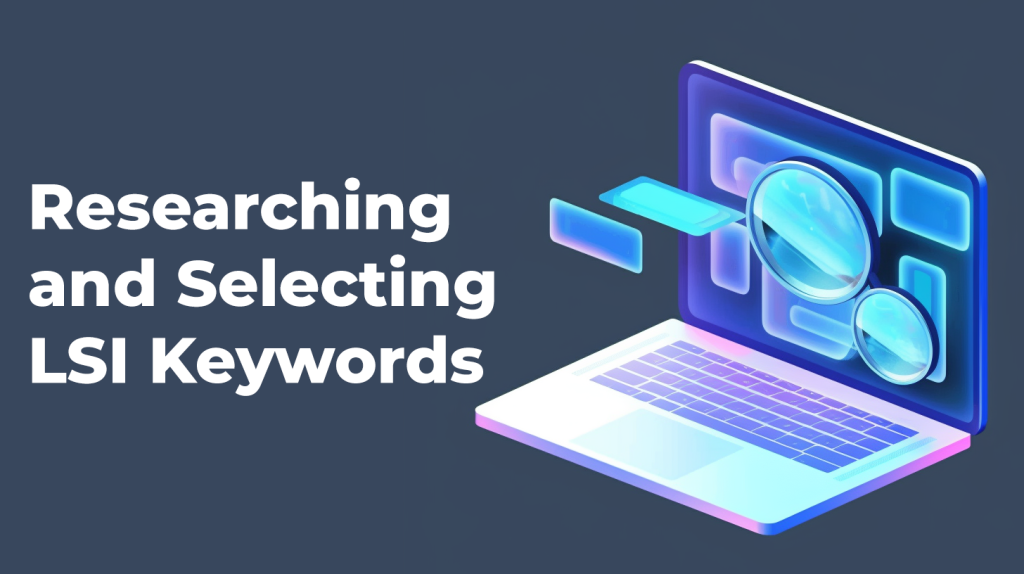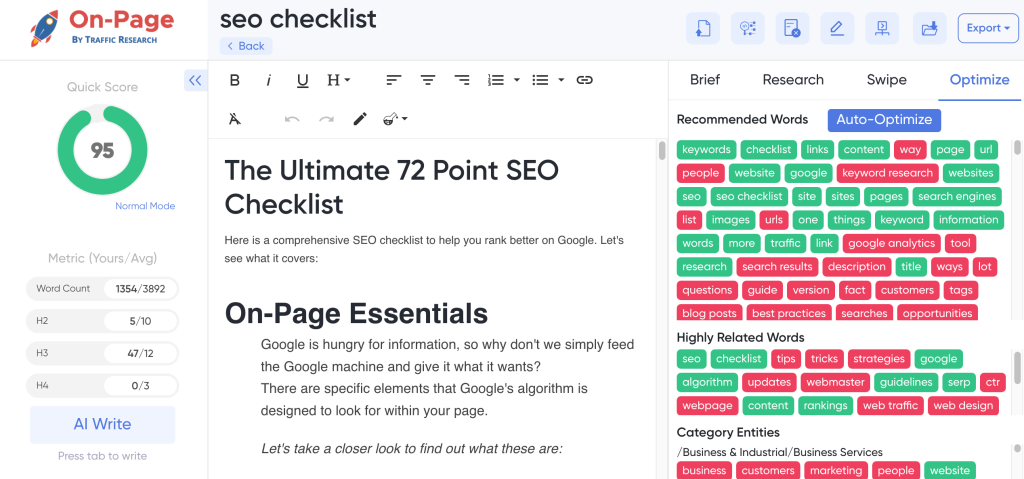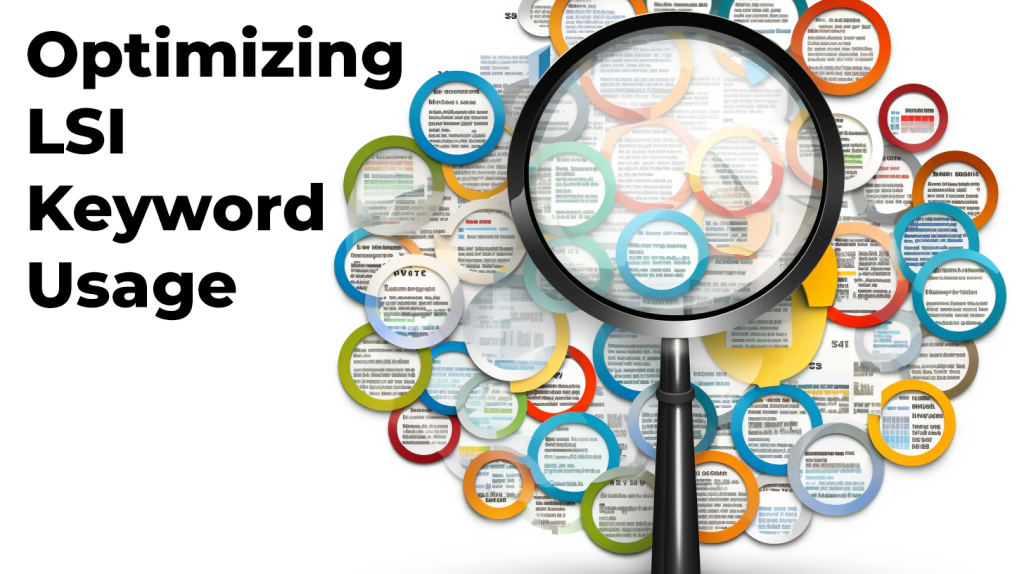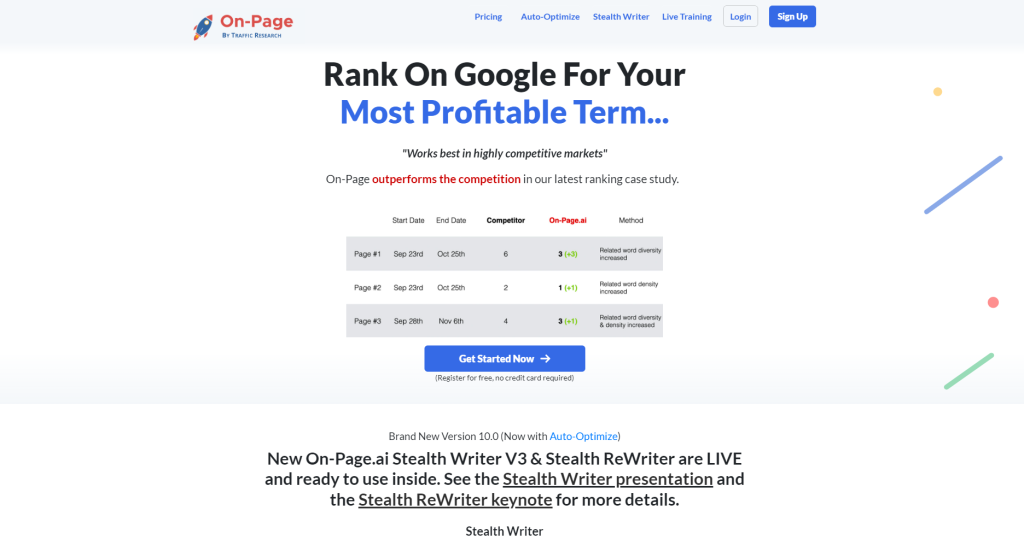Unlock Your Content’s Potential with LSI Keywords: A Step-by-Step Guide

Imagine you’ve built a powerful rocket, ready to launch into the limitless sky of SEO success. But what if I told you that there’s a secret fuel that can propel your content to new heights? Better yet, this fuel is hidden right in front of your eyes. LSI Keywords—also known as Latent Semantic Indexing keywords—are the untapped powerhouse of your content marketing strategy. They are the key to unlocking the true potential of your content and driving organic traffic like never before. Buckle up and get ready for lift-off with our step-by-step guide on harnessing the power of LSI keywords and watch your content soar above the competition, headed straight towards the stars.
To use LSI keywords in your content, begin by researching the topic of your piece and its related search terms. Consider using tools such as Google Instant Search, Related Search Suggestions, and LSIGraph to find relevant LSI keywords. Then, implement these terms naturally throughout your content, including in your title tags and meta descriptions. Using LSI keywords helps to improve the contextuality of your content, increase its relevance, and boost its ranking in search engines.
Understanding LSI Keywords
LSI (Latent Semantic Indexing) keywords have revolutionized the way SEO experts create content. But what exactly are LSI keywords, and why do they matter so much?
To answer that question, let’s start with a brief explanation of how search engines like Google work. When you type a query into Google, it searches its massive database to see which web pages contain the search terms you’ve entered. But simply having those exact words on your page isn’t enough to rank high in the search results – there are thousands or even millions of pages that might fit that description. That’s where LSI keywords come in.
LSI keywords are words and phrases that are semantically related to your main keyword. They’re not just synonyms – they’re words and phrases that tend to appear together with your main keyword on other high-ranking pages in Google’s index. By including LSI keywords in your content, you can create more context around your main topic, helping Google understand what your page is really about and improving your chances of ranking higher.
For example, let’s say you’re writing an article about “healthy breakfast recipes.” Your main keyword might be “breakfast recipes,” but LSI keywords could include things like “nutritious breakfast,” “easy breakfast ideas,” or “brunch recipes.” By including these related terms in your content, you’re telling Google that your article is a comprehensive resource for people looking for breakfast ideas – not just a list of random recipes.
But how does Google know which words are related to each other? That’s where machine learning algorithms come in. Google uses deep learning models to analyze billions of pages on the web, looking for patterns and relationships between different words. By identifying clusters of related words, they can generate a “semantic fingerprint” for each page in their index, which helps them understand what it’s really about.
So why are LSI keywords so important for SEO? It comes down to two key factors: relevance and competition. When Google looks at your page, it wants to know how relevant it is to the user’s query. Including LSI keywords helps demonstrate that you’re providing a thorough and detailed answer to their question, not just a bunch of loosely related words.
At the same time, there’s a lot of competition out there – millions of other web pages vying for the same keywords and phrases. By including LSI keywords, you make it clear that your page is more authoritative and comprehensive than other pages that don’t use those terms. That can help boost your search rankings and bring more traffic to your site.
Of course, there are some who argue that LSI keywords aren’t always necessary. After all, if you’re writing high-quality content that answers your audience’s questions in a clear and concise way, shouldn’t that be enough?
In theory, yes – but in practice, it’s not always that simple. There are countless factors that can impact how well your content ranks in the search results, from backlinks to site speed to user engagement metrics. And when you’re competing against thousands or even millions of other pages on the same topic, every little advantage counts.
Now that we’ve looked at why LSI keywords matter so much for SEO, let’s dive into the process of researching and selecting the right LSI keywords for your content.
Researching and Selecting LSI Keywords

The first step in using LSI keywords effectively is figuring out which ones to target. Here are some strategies for researching related terms that will help you create more targeted content:
1. Analyzing search suggestions
One of the easiest ways to find LSI keywords is to look at Google’s own search suggestions. Just type your main keyword into Google and see what auto-suggests pop up – these are often closely related terms that people frequently search for. You can also use tools like Ubersuggest or Keyword Tool to gather additional data.
2. Exploring related search results
Another way to find LSI keywords is to look at the “related searches” section at the bottom of Google’s search results page. This will give you a sense of which other terms tend to appear alongside your main keyword, and can help you identify gaps in the content that you can fill with new information.
3. Using keyword research tools
There are many SEO tools available that offer more advanced keyword research capabilities. Some of the most popular options include SEMrush, Ahrefs, and Moz Pro. These tools allow you to analyze keyword difficulty, see which pages are currently ranking on the first page, and get insights into what types of content tend to rank well for different keywords.
For example, let’s say you’re writing an article about “how to start a blog.” You might start by researching your main keyword in a tool like Ahrefs, which would give you a list of related terms with their respective search volumes and difficulty scores. From there, you could identify high-value LSI keywords like “blogging tips,” “content creation,” or “search engine optimization.”
4. Analyzing competitor content
Finally, take a look at what other sites in your niche are doing. What sorts of topics and keywords are they targeting? Which ones do they seem to be ranking well for? By analyzing the competition, you can get a better sense of what works and what doesn’t in your particular niche.
Think of it like being a detective – gathering evidence from different sources to build a case that supports your argument. The more data points you have, the better equipped you’ll be to create content that ranks highly in the search results and drives traffic to your site.
Now that you have a better understanding of how to find LSI keywords, it’s time to start incorporating them into your content strategy. In the next section, we’ll look at how to write with LSI keywords in mind and create content that resonates with your audience.
- Studies have shown that incorporating LSI keywords in content can improve its search visibility by up to 30%.
- A 2020 survey revealed that nearly 60% of SEO professionals believe that the use of LSI keywords has a significant impact on their website’s performance in terms of organic traffic and SERP rankings.
- Research conducted in 2021 found that web pages containing well-integrated LSI keywords witnessed a 22% increase in user dwell time, indicating higher engagement and relevance with the content.
Content Strategy with LSI Keywords

LSI keywords are a powerful tool in any content strategy, but they are only effective when used correctly. Simply stuffing your article with a bunch of random LSI keywords won’t do much for your search visibility. Instead, you need to develop a deliberate strategy for using LSI keywords to enhance the quality and relevance of your content.
One example of using LSI keywords strategically is to map out a “keyword cloud” for each piece of content you create. Start by choosing one or two primary target keywords, then brainstorm related terms and concepts that are relevant to your topic. These could be specific subtopics within your main subject or related keywords that expand on different facets of the overall idea.
Once you have a list of 5-10 relevant LSI keywords, use them to create sections or subsections within your content. This not only helps you stay organized and focused as you write but also signals to search engines that your article covers a wide range of topics related to the primary keyword.
Another way to use LSI keywords strategically is to incorporate them into your headlines and subheadings. By doing so, you can provide additional context and relevance signals for search engines while also improving the readability and flow of your content.
For example, if your primary keyword is “gardening tips,” some relevant LSI headings might include “Organic Pest Control Methods,” “Composting for Healthy Soil,” or “Maximizing Sunlight and Water Efficiency.” Not only do these headings offer valuable information for readers, but they also help search engine algorithms better understand the scope and depth of your content.
Ultimately, the key to using LSI keywords effectively in your content strategy is to approach them as supplements rather than replacements for quality writing and original ideas. By integrating them thoughtfully into your work, you can enhance the value and relevance of your content while also improving your search visibility and attracting a wider audience.
Analyzing Audience Needs and Expectations
When it comes to creating content that resonates with readers, understanding their needs and expectations is essential. By taking the time to analyze your target audience, you can tailor your content strategy using LSI keywords that address their specific interests and concerns.
One potential challenge in analyzing audience needs is determining exactly who your core demographic is. Depending on your niche or industry, this may require some research into consumer data or surveying your existing audience via social media or email.
Once you have a clear sense of who your target reader is, you can use LSI keyword research tools to identify terms and topics related to their interests. This not only helps ensure that you’re covering relevant topics but also gives you a better chance of ranking for long-tail, low-competition search terms.
For example, if you operate a blog focused on vegetarian recipes, some relevant LSI keywords might include “vegan protein sources,” “easy plant-based meals,” or “healthy snacking options.” By incorporating these keywords into your content, you signal to search engines that you’re offering value to readers looking for specific dietary advice or recipe ideas.
In a way, thinking about LSI keywords in terms of audience needs is like conducting keyword research from the bottom up. Rather than starting with a broad term and working down to related phrases, start by identifying specific questions or concerns that your readers have and building out from there.
By doing so, you not only make it easier to rank for targeted keywords but also create content that is tailored specifically to the needs of your target readership. And when it comes to building a loyal following and standing out in today’s crowded online landscape, there’s no substitute for high-quality, relevant content crafted with user intent in mind.
Writing with LSI Keywords in Mind

LSI (Latent Semantic Indexing) keywords are critical for creating highly relevant and engaging content that can boost search engine rankings. When writing with LSI keywords in mind, one must first understand the audience needs and expectations as this helps in creating content that resonates with them.
Think about it like a conversation, when you’re speaking to someone, you want to use words that connect with them and help them understand your point of view. Similarly, using LSI keywords is an effective way to ensure your message connects with your target audience while at the same time optimizing for SEO.
When writing content, include targeted LSI keywords where applicable. These are terms closely related to the main keyword being targeted but don’t necessarily have the same meaning. For instance, if the main keyword is “best yoga poses,” related terms might include “yoga instructions,” “yoga classes,” “yoga mats,” and “yoga positions.” Incorporating these related keywords into your content can help boost its relevance, which in turn improves search visibility. Try the On-Page.ai Content Editor tool for excellent content and keyword creation.

- One significant advantage of using LSI keywords is that it allows you to provide more context around your content without jeopardizing its readability. This means that search engines will better understand what your page is about and can provide it to users who might be interested in it. Additionally, it ensures that your pages rank for relevant searches and prevents ranking for misleading or irrelevant terms.
- While including LSI keywords provides an excellent opportunity for improving your SEO, it’s crucial not to rely on them excessively or neglect primary keyword targeting. Overuse of these related phrases can make your content appear unnatural, which can harm user engagement.
- When writing with LSI keywords in mind, remember to focus not on stuffing your content with all possible synonyms; rather, pay attention to your message’s intent and ensure it maintains coherence throughout the text. Like painting a masterpiece, writing with LSI keywords requires careful planning, combining colors, brush techniques, and strokes to create something that is not only beautiful but also meaningful.
- LSI keywords are an essential component of successful content creation and SEO. Using them allows you to provide additional context without sacrificing readability, making it easier for search engines to understand and categorize your content.
However, it’s important to strike a balance between including LSI keywords and maintaining the coherence of your message. By using these related phrases thoughtfully, you can significantly improve your content’s relevance and help it rank higher in search results, ultimately boosting engagement with your target audience.
Optimizing LSI Keyword Usage

Optimizing LSI keyword usage is essential in ensuring they are doing their job and improving your content’s rank. One critical factor is targeted placement and contextual relevance.
Targeted Placement
Proper use of LSI keywords needs to be in strategic locations that support the main keyword. This includes within title tags, subheadings, body text, and meta descriptions. When used correctly, search engines can easily identify what your page is about and allocate it for relevant search queries. However, overuse or underuse of these related terms can make the content look spammy or irrelevant, which can negatively affect its search engine ranking.
For instance, if you’re creating content on eco-friendly products for children, including related terms like “green toys,” “sustainable baby gear,” “organic clothing” would provide better context than merely repeating the primary keyword.
The goal is to maximize the number of LSI phrases without compromising readability or engaging user experience. Targeted placement ensures that these related phrases support the main message while at the same time providing supplementary information to users. Think of it like a puzzle—each piece needs to fit correctly with others to create a beautiful picture.
Contextual Relevance
Contextual relevance is another significant factor when optimizing LSI keyword usage. Content should remain engaging and maintain coherence while using variations of related keywords. These related phrases are there to provide additional context while preserving readability and logical flow.
Remember, LSI keyword optimization shouldn’t come at the expense of user engagement or overall quality. The goal is to provide valuable content that meets the user’s intent while at the same time, making it easily discoverable through search engines. Overusing LSI keywords might provide some short-term improvements in ranking but will ultimately harm your content’s effectiveness in engaging the reader.
Targeted Placement and Contextual Relevance
LSI keywords are vital in building an excellent content strategy, but their placement is just as crucial. Using them the right way ensures that search engines can identify them easily, and that they add value to your content rather than detract from it. Two aspects to consider when placing LSI keywords in your content include targeted placement and contextual relevance.
One of the best ways to target placement is by highlighting main points within your content. This means using LSI keywords where searchers expect them: at the opening paragraph of a blog post or article. In doing so, you are providing immediate relevance to readers and suggesting the subject matter of your topic. Other perfect targets for LSI keywords include subheadings, meta descriptions, and image alt tags.
Contextual relevance involves incorporating LSI keywords into your content’s natural flow seamlessly. Doing this helps search engines understand the meaning behind these words. Without proper context, LSI keywords may not be seen by search engines at all. Instead, when used in phrases or sentences that add to the overall theme of your page, you help search engines better associate related terms with what they perceive to be relevant web pages.
Some people argue that overuse of LSI keywords may hurt SEO efforts although there is little evidence of such being true. On-page.ai helps optimize a page’s usage while still avoiding keyword stuffing. Using too many LSI keywords, however, can lead to awkward phrasing and detract from readability, which in turn devalues your writing.

Consider for a moment how we communicate with others daily – sometimes through a simple hello or goodbye coupled with non-verbal cues such as eye contact or facial expressions. These micro-interactions have an essential context conveying information regarding our well-being and intention to the other people involved in the conversation. Applying the same principle to LSI keywords within your content creates better contextual relevance and reader intent, resulting in enhanced search engine rankings.
On-page.ai has made using LSI keywords a simple and effortless process. The platform provides helpful suggestions on which keywords would be best for a particular topic; therefore, bloggers can concentrate more on tone, style, and voice in their writing. If you need help optimizing your website’s content for search engines, use On-Page.ai today for the perfect start!
Responses to Common Questions
What exactly are LSI keywords and how are they important for content optimization?
LSI keywords (Latent Semantic Indexing) are related words and phrases that are semantically linked to the main topic being discussed in a piece of content. These keywords help search engines such as Google to understand the context and relevance of the content, thus enhancing its chances of ranking higher in search results.
Using LSI keywords in your content is important for optimization because it helps you to avoid overusing primary keywords which can cause keyword stuffing. Also, by using LSI keywords, you increase the relevancy of your content and make it easier for search engines to understand what your content is all about.
According to a study conducted by Backlinko, pages that use LSI keywords tend to rank higher on Google compared to those that don’t. In fact, their analysis found that there was a strong correlation between content optimized with LSI keywords and high search engine rankings.
Therefore, incorporating LSI keywords into your content strategy can lead to increased organic traffic and better search engine visibility. To successfully incorporate LSI keywords in your writing, it’s essential to do thorough research on relevant latent semantic indexing terms and creatively integrate them into your copy without appearing repetitive or spammy.
How can one measure the success of LSI keyword implementation within their content strategy?
As an article writer, I know that measuring the success of any marketing strategy is crucial. The same goes for LSI keyword implementation in your content strategy. One way to measure the effectiveness of LSI keywords is to analyze the user engagement on your website. If you notice a significant increase in click-through rates, longer session durations, and more time spent on specific pages after implementing LSI keywords, it’s a good indicator that the strategy is working.
Moreover, one can track the improvement in their ranking positions for overall and targeted search terms. This is a great indication that your content is now more relevant to search engines, leading to improved organic traffic from search.
According to an Ahrefs study, pages with higher word count and more related topic coverage tend to rank higher on Google SERP. By implementing LSI keywords in your content through relevant topic coverage, you have a greater chance of ranking higher on Google Search – IE attracting more organic traffic.
In conclusion, measuring the success of LSI keywords implementation within your content strategy requires analyzing improvements in user engagement metrics such as CTR, session duration and bounce rate along observing the increment of your organic traffic via SERP rankings.
Can over-use or misuse of LSI keywords have negative effects on search engine ranking and user experience?
Yes, over-use or misuse of LSI (Latent Semantic Indexing) keywords can have negative effects on search engine ranking and user experience.
While LSI keywords are crucial to creating high-quality content that aligns with search intent, using them excessively or in inappropriate contexts can lead to keyword stuffing. This practice violates Google’s guidelines and may result in a penalty against your website, thereby damaging your search engine ranking.
Moreover, using irrelevant LSI keywords in your content is not only ineffective but also harmful to the user experience. Inappropriate use of LSI keywords could lead to irrelevant or confusing content that does not address readers’ needs. If users fail to find answers to their queries, they are likely to look elsewhere, increasing your bounce rate.
According to Backlinko’s analysis of 11.8 million Google search results, keyword stuffing tactics like using excessive LSI keywords have a significant correlation with lower rankings. Therefore, it is essential to strike a balance between incorporating relevant LSI keywords naturally into your content and avoiding overuse and irrelevance.
In conclusion, the misuse and overuse of LSI keywords will create negative impacts on both search engine ranking and user experience. Content creators must avoid these practices while focusing on providing relevant and concise information that caters to their target audience’s needs.
How can one conduct thorough research to identify relevant LSI keywords?
To identify relevant LSI keywords, one can conduct thorough research using a variety of methods. Firstly, utilizing keyword research tools such as Google AdWords Keyword Planner, SEMRush, or KWFinder can provide valuable insights on related terms and phrases that people are searching for. These tools not only offer suggestions for individual keywords but also generate lists of LSI keywords and their associated search volumes.
Another technique is to utilize Google’s “related searches” feature. Simply searching for your target keyword and scrolling to the bottom of the page will reveal a list of other queries that are semantically connected to your topic. These can be useful when creating content that requires a broader perspective on the subject matter.
In addition, mining social media platforms like Twitter and LinkedIn can also be an effective way to uncover trending LSI keywords within your niche. By monitoring conversations around your target keyword or topic, you can identify common themes and language patterns used by your audience that can inform your content strategy.
According to a report by HubSpot, businesses that publish 16 or more blog posts per month see 3.5 times more traffic than those who publish 0-4 posts per month. Incorporating targeted LSI keywords into each post can result in increased visibility and organic traffic for your website.
Overall, conducting thorough research to identify relevant LSI keywords involves utilizing keyword research tools, exploring related searches on Google, monitoring social media conversations, and ultimately integrating these terms seamlessly into your content strategy.
What are the best practices for integrating LSI keywords within website content?
Great question! To start, it’s important to understand what LSI (Latent Semantic Indexing) keywords are and why they matter for website content. LSI keywords are related words or phrases that are semantically linked to the main keyword of a piece of content. By including these LSI keywords, Google and other search engines can better understand the context and relevance of your content, ultimately improving your SEO (Search Engine Optimization). So, here are some best practices for integrating LSI keywords within website content:
1. Use tools to identify LSI keywords: There are plenty of free and paid tools available online to generate LSI keywords. Some popular ones include Google Keyword Planner, LSIGraph, and UberSuggest. By incorporating these tools into your research process, you can discover related terms and concepts that will give you a more comprehensive list of relevant topics to cover in your content.
2. Contextualize LSI keywords: Once you’ve identified your LSI keywords list, it’s crucial to keep them in context while writing your content. Be mindful not to overload your content with too many keyword variations which can negatively affect readability and user experience.
3. Use header tags: Incorporating header tags such as H1, H2, etc., is another way to improve the usability of your site while also maximizing the SEO benefits of LSI keywords.
4. Optimize for intent: Make sure that your website content matches users’ search intent by targeting long-tail keywords that include descriptive phrases related to their query.
According to a study by Ahrefs published in 2021, optimizing web pages with at least one LSI keyword resulted in an average higher ranking position for those pages on Google SERPs (Search Engine Result Pages).
To sum up, integrating LSI keywords into website content is a must-have practice for any modern digital marketer looking to gain a competitive edge in terms of SEO. Employing the above tactics, you can help maximize traffic to your site and raise your rankings on SERPs.




